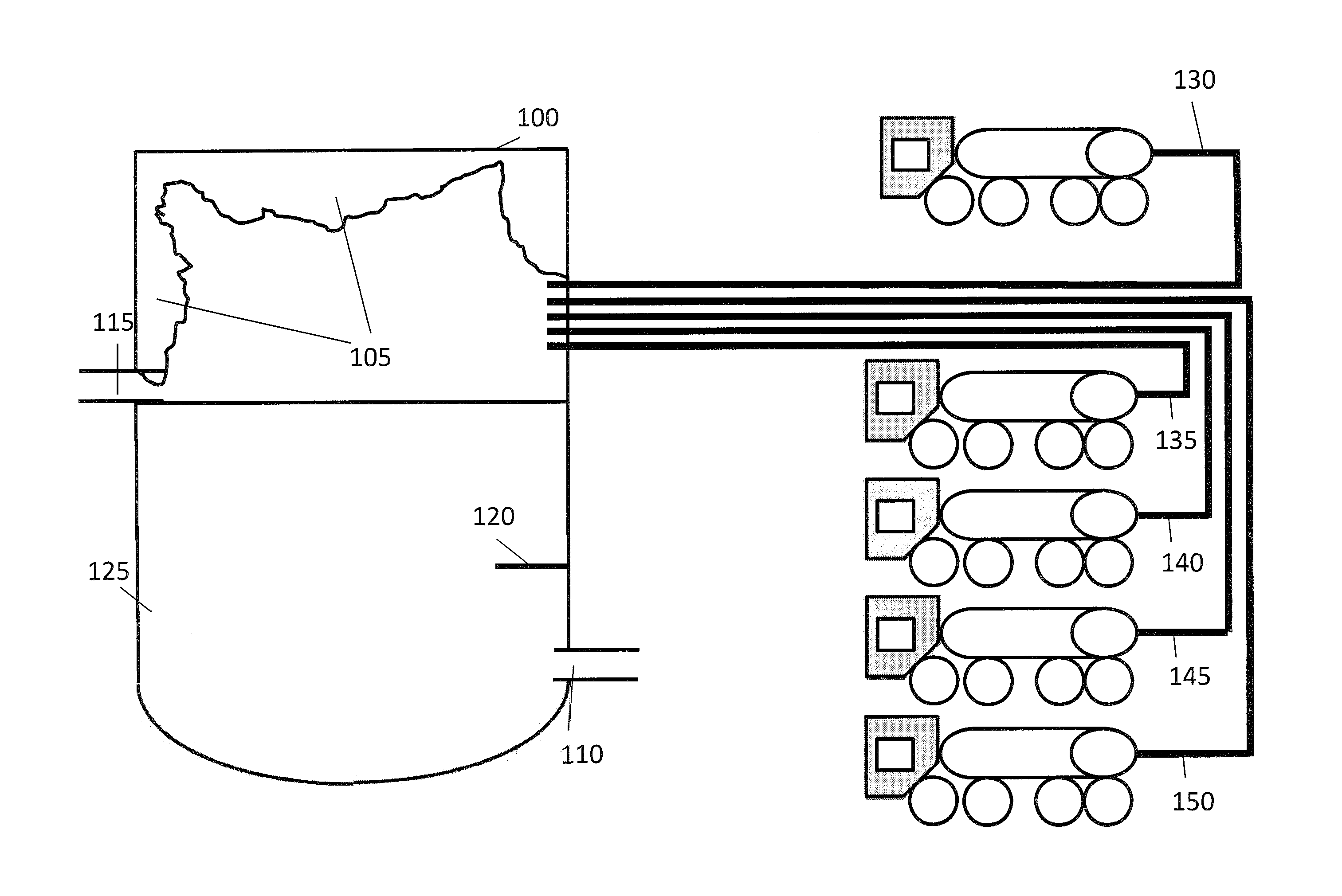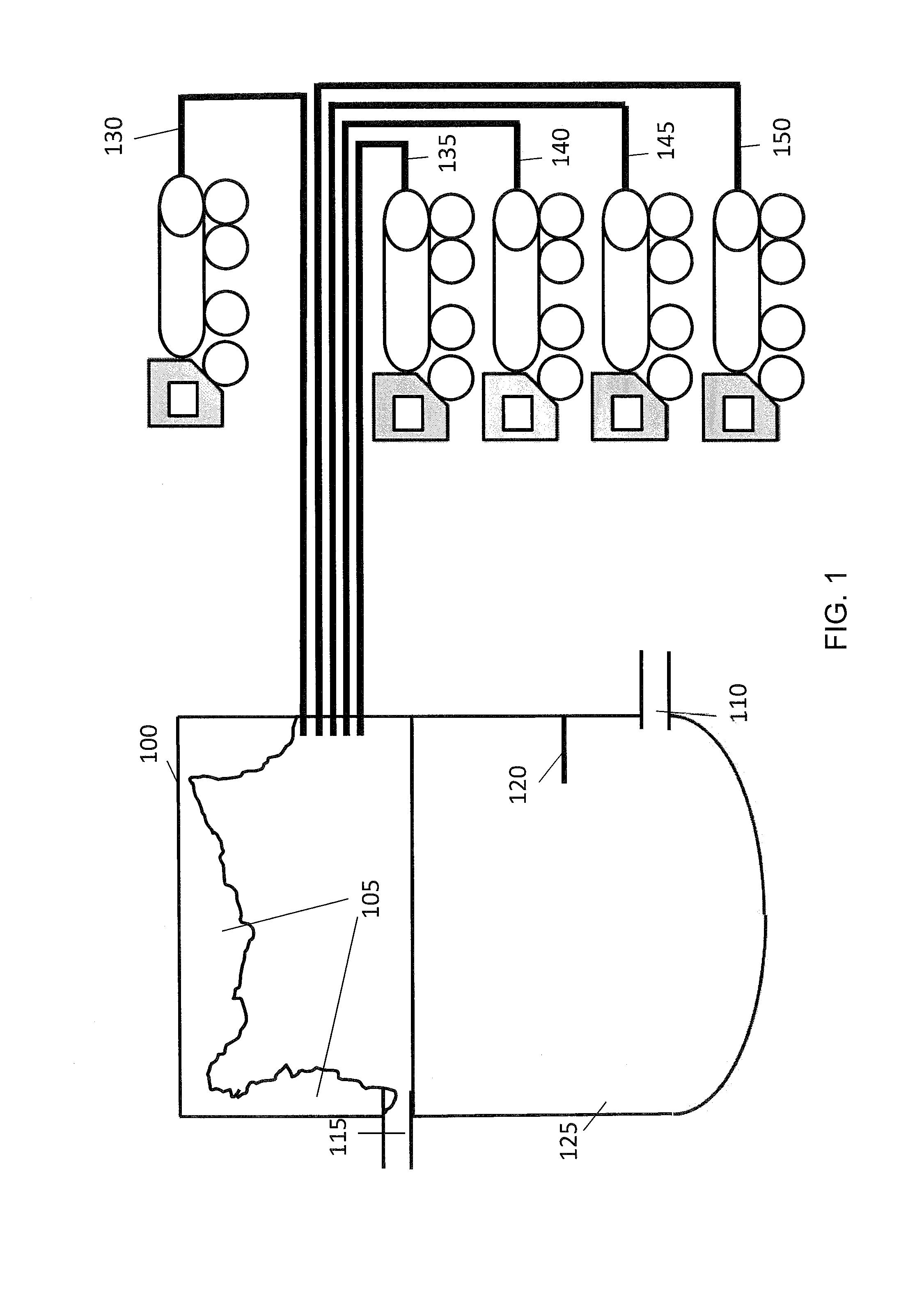Method for cleaning a waste water vessel for the waste water industry
- Summary
- Abstract
- Description
- Claims
- Application Information
AI Technical Summary
Benefits of technology
Problems solved by technology
Method used
Image
Examples
Embodiment Construction
[0047]FIG. 1 is a diagram schematically illustrating a cross section of a waste water vessel to be cleaned in accordance with one embodiment. In this embodiment the waste water vessel 100 is a settling tank in a waste water treatment plant. As shown in FIG. 1, the waste water vessel 100 contains an inlet pipe 110, from which waste water 125 enters the vessel and an outlet pipe 115 located at the top of the waste water vessel 100. Waste water 125 enters the vessel via pipe 110 and is allowed to settle, causing particles and other detritus (not shown) to sink to the bottom of the tank. As waste water 125 enters the tank, the level of the waste water 125 rises, until it reaches the level of the outlet pipe 115 at which point, the top layer of waste water 125 exits via outlet pipe 115. The waste water 125 may comprise fats, oils and grease which have been inappropriately disposed of These substances may initially enter the waste water vessel 100 in a liquid state. However, as they cool,...
PUM
 Login to View More
Login to View More Abstract
Description
Claims
Application Information
 Login to View More
Login to View More - R&D
- Intellectual Property
- Life Sciences
- Materials
- Tech Scout
- Unparalleled Data Quality
- Higher Quality Content
- 60% Fewer Hallucinations
Browse by: Latest US Patents, China's latest patents, Technical Efficacy Thesaurus, Application Domain, Technology Topic, Popular Technical Reports.
© 2025 PatSnap. All rights reserved.Legal|Privacy policy|Modern Slavery Act Transparency Statement|Sitemap|About US| Contact US: help@patsnap.com



